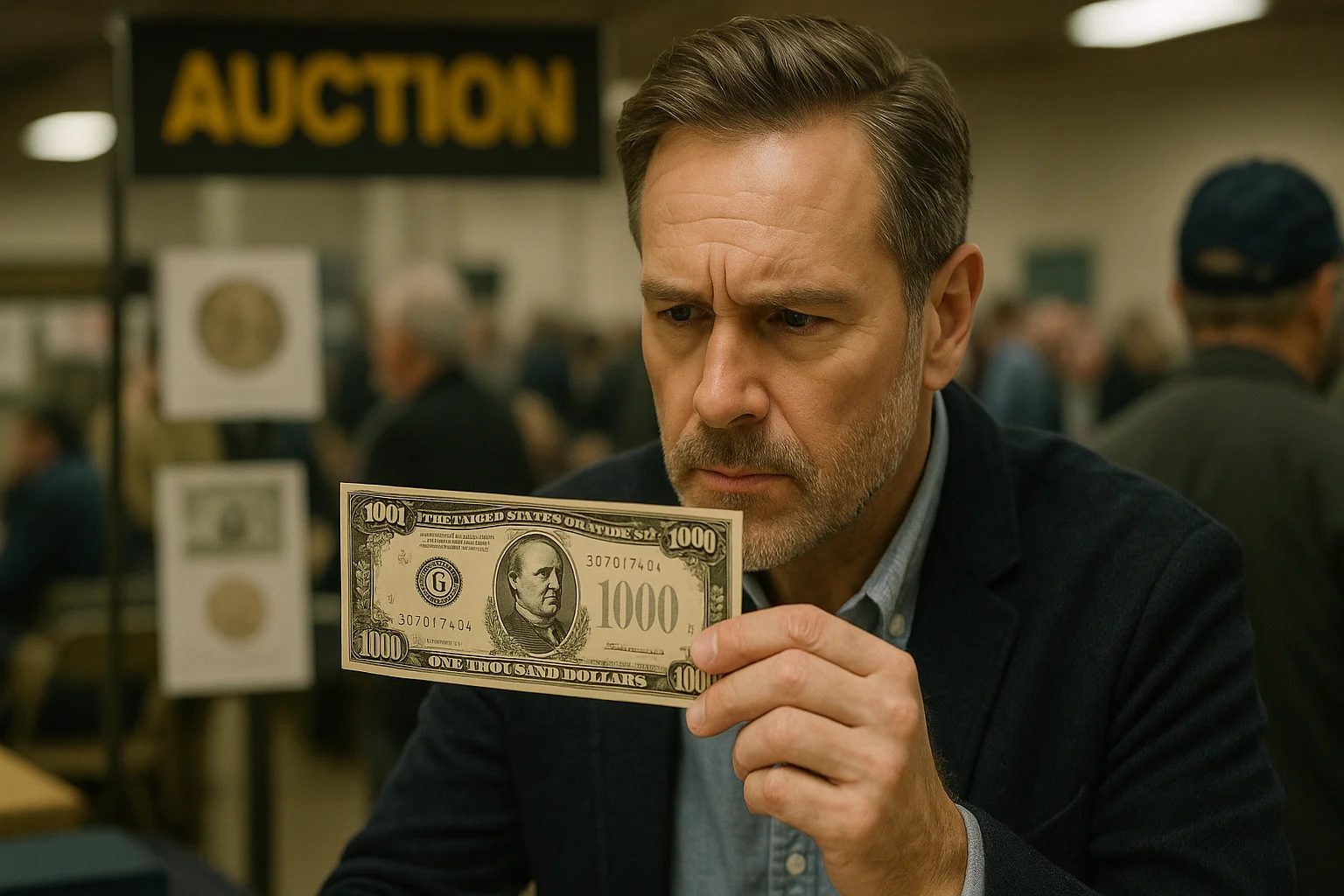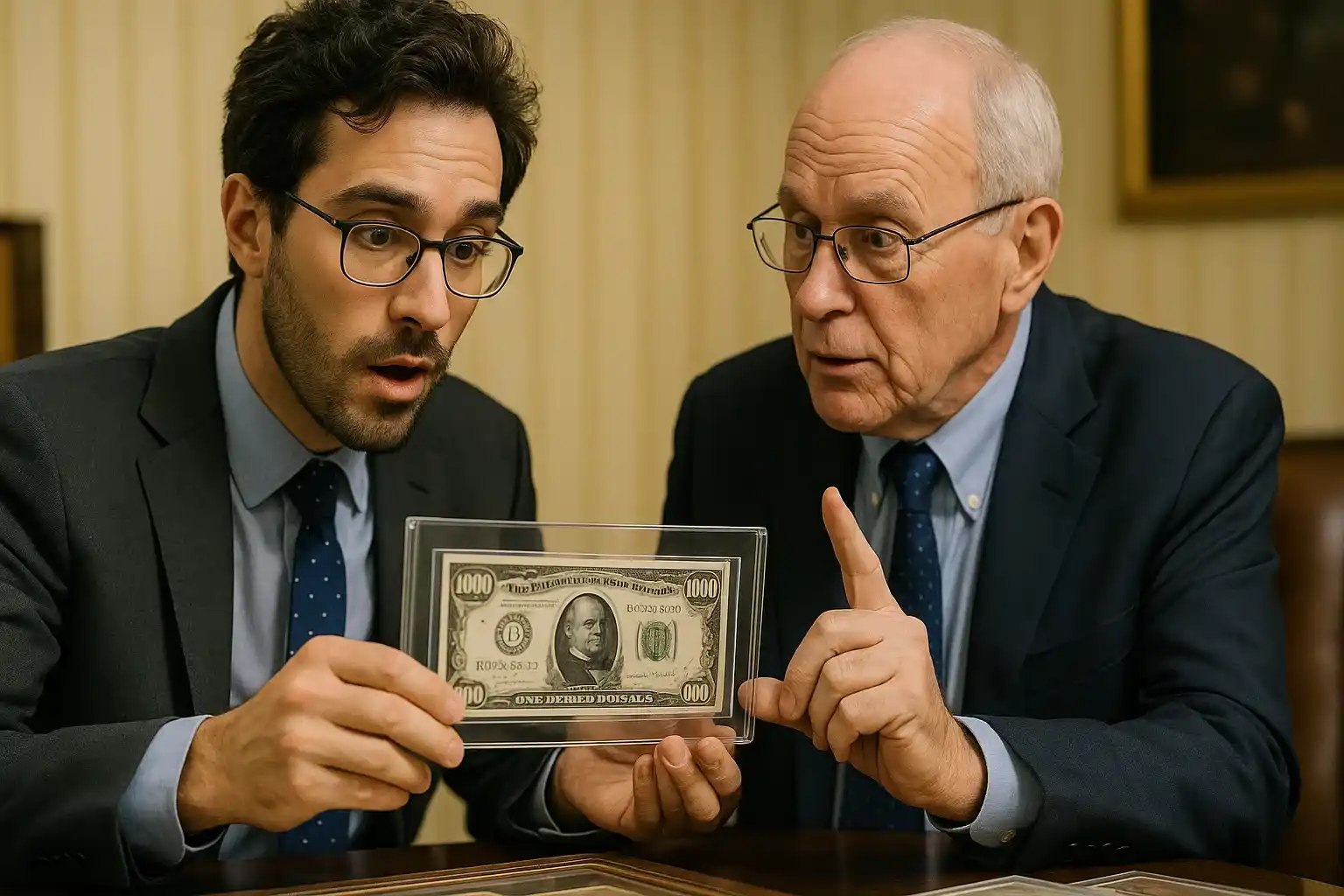The US $1000 bill is one of those pieces of American currency that seems wrapped in mystery. People hear about it, imagine it as something out of a movie, and often wonder if it was ever real. The truth is simpler: yes, the bill officially circulated in the United States, but today it is almost impossible to encounter in daily life. However, the bill's rarity, historical value, and connection to political figures are reasons, making this note a favorite topic to discuss among collectors.
So, today we offer you to find answers to some of the most common questions people ask about this unusual banknote, starting with why it disappeared from wallets of ordinary people at all.
FAQ 1: Why Did the $1000 Bill Stop Being Printed, and Can You Still Use It?
The $1000 bill was officially discontinued in 1969. The Federal Reserve decided that this high-denomination note was rarely used in everyday transactions, thus it posed a risk for large-scale illegal activities.
Technically, the $1000 bill is still legal tender, so it could be used for payments. In reality, most merchants and banks would quickly remove it from circulation because its collectible value far exceeds its face value.
Today, the $1000 bill exists primarily as a collector’s item. They are most often found at auctions, coin and currency shows, or in private collections.
Collector’s tip: These notes are extremely rare, so finding one usually requires attending specialized auctions or connecting with established collectors and dealers.
Where to find one:
Auctions — Major numismatic events often list rare high-denomination notes.
Coin and currency shows — A handful of dealers still display them at specialty exhibits.
Private sales — High-value transactions often happen quietly between collectors.

FAQ 2: Who Appears on the $1000 Bill?
Unlike smaller denominations, the $1000 bill featured different figures across its limited issues:
Alexander Hamilton — seen on the 1918 series. As the nation’s first Secretary of the Treasury and a key architect of America’s financial system, Hamilton’s face on high-value currency was a symbol of stability and authority.
Grover Cleveland — chosen for the 1928 and 1934 issues. Cleveland remains the only U.S. president to serve two non-consecutive terms, a detail that already makes him stand out in American history. His portrait added a sense of presidential gravitas to the rare note.
For collectors, knowing exactly who appears on the bill is not another little nuance, as different portraits and series can dramatically affect a note’s value. A Cleveland issue in pristine condition, for instance, may be worth significantly more than a worn Hamilton version, depending on rarity and demand.
Collector’s tip: Always confirm the portrait before making a purchase or evaluation. The figure on the bill directly ties it to a specific historical series, which in turn influences its market price.
FAQ 3: What Is a $1000 Bill Worth Today?
The $1000 bill is worth much more than its face value, and its price depends mostly on condition, series, and rarity. A worn note that passed through many hands might still bring in around two thousand dollars, while crisp uncirculated pieces can sell for ten times their original value. Rare series or star notes make the price climb even higher, sometimes reaching levels collectors didn’t expect.
Condition / Type | Typical Market Value |
Heavily circulated | $1,500 – $2,500 |
Average circulated | $2,500 – $3,000 |
Uncirculated, standard issue | $8,000 – $12,000 |
Rare series or star notes | $15,000 – $30,000+ |
Some exceptional bills have even sold for 20-30 times their face value at auctions. That’s why collectors treat them less as currency and more as historic pieces — and why careful storage in a protective holder can make all the difference.
FAQ 4: How Can You Tell if a $1000 Bill Is Real?
Spotting a genuine $1000 bill comes down to a few clear checks. Because these notes are so rare, it’s worth paying attention to the following details:
Paper feel: Authentic notes are printed on a cotton – linen blend. They feel firm, slightly rough, and nothing like smooth office paper.
Printing quality: Real bills have sharp, detailed lines. Counterfeits often show blurry edges or uneven ink.
Serial numbers: Numbers should be perfectly aligned and consistent. Repeated or crooked numbers are a warning sign.
Watermarks and details: Look closely for embedded marks and fine design elements that fakes often miss.
Tip: Always compare with trusted reference images and, if in doubt, get an expert opinion. A professional check is worth it for a note of this value.
FAQ 5: Why Do Collectors Compare $1000 Bills to Rare Coins?
Collectors often put $1000 bills in the same category as rare coins. Why? This is all because these notes are pieces of history that have gained special status over time. Like coins that disappeared from circulation and became symbols of their era, high-denomination bills are now seen as rare items worth preserving in a museum or private collection.
Some reasons for the comparison:
They become scarce once removed from circulation
They are valued as a store of wealth
They are closely tied to American history
They are often passed down as family heirlooms
They appear together in auctions
Modern collectors also use tools like Coin ID Scanner to check authenticity and keep track of their collections, whether they’re handling coins or rare banknotes.
FAQ 6: Is the $1000 Bill a Good Investment?
The Case For It
The appeal of the $1000 bill as an investment lies mainly in its rarity and reputation. With no new notes being printed and existing ones gradually disappearing into collections or museums, the supply is permanently limited. On top of that, interest from collectors has only grown in recent decades. These two forces combine to push prices upward over time.
Advantages include:
Limited supply that cannot be replenished.
Strong collector demand worldwide.
Steady appreciation in value, especially for uncirculated notes.
The Case Against It
Still, a $1000 bill isn’t the perfect investment for everyone. Compared to stocks, gold, or even rare coins, it suffers from lower liquidity. Finding a buyer can take time, and the market isn’t as broad as for other collectibles. That means you might own a valuable note on paper but struggle to turn it into cash quickly.
Drawbacks include:
A smaller pool of interested buyers.
Difficulty selling quickly at full market value.
Price growth that lags behind some rare gold or silver coins.
Tip: Treat a $1000 bill as a jewel in a larger collection, not as your primary investment. That way, you can enjoy its historic charm without depending on it for financial gain.
FAQ 7: What to Check Before Buying a $1000 Bill?
Buying a $1000 bill takes more care than picking up regular cash. These notes are rare, highly sought after, and can be worth thousands of dollars, so knowing exactly what to look for is essential.
A genuine bill shows fine craftsmanship in the paper and printing, while even minor mistakes or wear can greatly affect its value. Experienced collectors always check every detail carefully, from the feel of the paper to the alignment of the serial numbers, before making a purchase.
Handling, storage, and where you buy from can make a big difference in preserving its worth over time. So, remember the main points:
Check the paper and feel it in your hands
Look at the printing details for sharp clear lines
Verify the serial numbers match authentic examples
Examine the condition for folds tears or stains
Buy only from trusted dealers or certified auctions
Store the bill in protective sleeves albums or a safe
Even small creases or minor defects can lower the value a lot. So, take the time to inspect each detail carefully to save yourself from costly mistakes and be sure you’re getting a genuine collector’s item.

FAQ 8: Should Beginners Chase a $1000 Bill?
For someone just starting out, a $1000 bill is not the ideal first purchase, because the bill is quite expensive, rare, and requires experience to evaluate correctly. Mistakes in assessing authenticity or condition can cost hundreds or even thousands of dollars.
However, for collectors passionate about the history of money and willing to invest seriously, a $1000 bill can become the centerpiece of a collection because of the same rarity and historical significance that tells a story no modern note can.
So, taking all the above, just remember: start small, learn the basics, and build confidence before buying high-value bills. When you are ready, owning a $1000 bill can be both a rewarding experience and a long-term investment for your collection.
